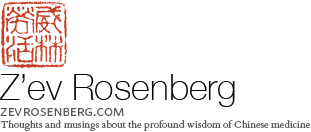It can be difficult to practice Chinese medicine in a Western society, because it cannot be simply grafted onto a different culture or medical system. Studying Chinese medicine means immersion in the world view and historical source texts that reveal the theoretical foundations of the subject. Chinese medicine has a unique view of the phenomenal world, based on the Han Dynasty-based view of space, time and dimensional thinking. This view influenced family life, architecture, public service, medicine, and the arts, and was encoded in such classics as the Yi Jing, Su Wen, Lao Zi and Chuang Zi. The Han Dynasty was one of the ‘renaissances’ of Chinese medicine, when such major source texts as the Shang Han Lun, Jin Gui Yao Lüe, and Nan Jing were written. Chinese medicine was designed as a lifestyle practice (養生 yang sheng/nourishing life) and as preventative medicine. As it says in the Su Wen “treating disease when one is already sick is like trying to drill a well when one is already thirsty.” So Chinese medicine is more than just a profession.
Without immersion in Han dynasty thought (and other eras), we cannot really hope to offer an alternative or complimentary approach to biomedicine, or we will end up with an eclectic ‘bag of tricks’ from other alternative sources.


Hi, cool !! i really liked the point “treating disease when one is already sick is like trying to drill a well when one is already thirsty.” Perfectly right!! let us try to drill a well for some one whose going to feel thirsty. Good luck!